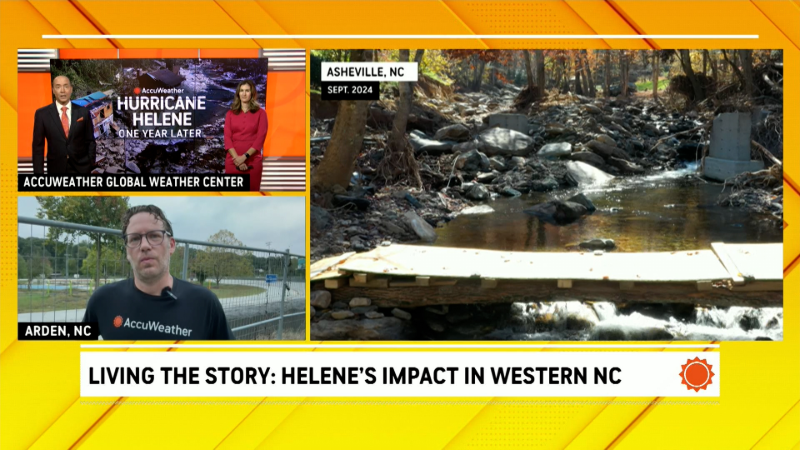Beryl to raise risk of flooding in Puerto Rico, Caribbean despite weakening
Despite weakening to a disorganized tropical rainstorm, Beryl can still spread drenching and gusty rain bands and rough seas across the Caribbean early this week.
As AccuWeather predicted, Beryl reached its peak intensity and dramatically lost strength prior to moving across the Lesser Antilles and approaching Puerto Rico.
The once-hurricane weakened to a disorganized tropical rainstorm on Sunday afternoon. Beryl will remain in that weakened state as it moves along a northwest path early this week.
This path took the small center of Beryl over the Leeward Islands on Sunday night.

Beryl is then expected to pass just south of Puerto Rico on Monday.
Because of the small size and weak nature of Beryl, widespread wind damage is not expected.
There can still be gusts of 30 to 40 mph (48 to 64 km/h) that buffet Puerto Rico on Monday.
Trees that have been trimmed and utility lines and structures that have been properly repaired in the wake of hurricanes Irma and Maria from 2017 should fair well.
However, power lines that have been jury rigged could fail and lead to sporadic power outages.
Localized heavy rainfall poses the greatest threat
While Beryl is expected to pass south of Puerto Rico, general rainfall totals of 1 to 2 inches are expected, according to Dr. Joel Myers, founder, president and chairman of AccuWeather.
In mountainous terrain, locally heavier amounts to 4 inches are possible.
"Puerto Rico was hard hit last year by Hurricanes Irma and then Maria, and the island is still recovering," Dr. Myers said. "Again, this amount of rain is significant because the infrastructure of Puerto Rico was so damaged last year."
The hurricanes from last year have reduced some of the canopy of vegetation that would normally slow down runoff.
"Any heavy rainfall is capable of causing flash flooding," Dr. Myers said. "This is particularly true in the places that get heavy downpours, especially low-lying and poor-drainage areas. Heavy rain, of course, can always trigger dangerous mudslides."
The risk of localized flash flooding and mudslides will be greatest along steep hillsides and in mountainous terrain.

"Residents of these areas should take precautions to stay safe and out of harm's way," Dr. Myers added.
On Friday, Puerto Rico Gov. Ricardo Rossello declared a state of emergency due to the potential impacts from Beryl in the coming days.
On Sunday, Rossello announced that he is continuing the emergency declaration even though Beryl has weakened.
The next land mass in the path of locally flooding rainfall and gusty winds from Beryl will be Hispaniola Monday night into Tuesday. Hispaniola is home to the Dominican Republic and Haiti.

The risk of rough surf and rip currents will spread westward through the northern Caribbean as the storm moves along.
Small craft should remain in port as Beryl approaches.
After Beryl tracks through the Caribbean, AccuWeather meteorologists will be closely watching this storm for the potential for re-strengthening over the Bahamas and offshore of the Southeast.
Elsewhere in the Atlantic, Tropical Storm Chris has formed off the coast of the Carolinas. While not expected to directly impact the east coast of the United States, rough surf and high seas will pose a threat to beachgoers and boaters.
Report a Typo











